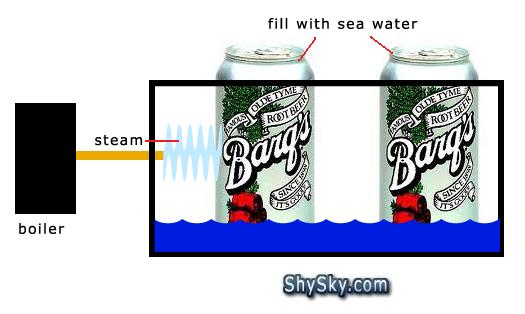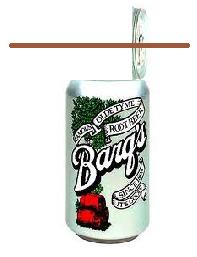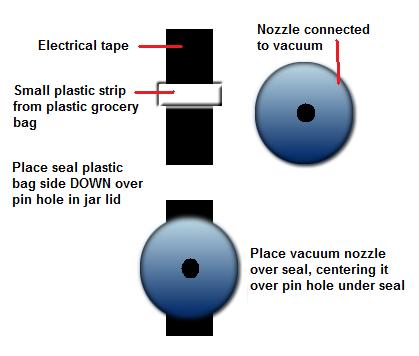 |
||||||||||||||||||||||||||||||||||||||||||||||||||||||||||||||||||
Batteries, Materials, Tools and Supplies for DIY Green Energy ProjectsIntroduction:
Reconditioning BatteriesIt's possible to recondition many batteries that other people think are "broke". If you can find a good source for 12v deep-cycle batteries, you can likely recondition most of them to be almost as good as new, saving you a lot of money on your batteries. Welder's Mask - If you are going to mess around with reconditioning batteries, please protect yourself. If you don't want to buy one new, check around and get a used one. And...Despite what you may find on YouTube, I suggest you not mess with the lithium batteries. Just buy those with some of the money you'll save. Now, there's a few folks selling "how to recondition battery" reports online for $49. They may be worth it (or not). But here Walt Barrett's site shows you how to do it for free. He has a free written guide here: How to Recondition Car Batteries. Here's a couple of Walt's videos showing how to do it:
The next biggest risk is working with the wrong type of batteries. Make sure you are working with the type of battery you think you are. With zapping NiCad batteries comes risks, and it's up to you to minimize the risks. But lots of people toss battery-operated tools and other things away because the batteries are dead. If you are smart and take every precaution, reconditioning NiCad batteries can be an option.
If you can find a good source of 12v deep-cycle batteries to recondition, you can add them to your systems for selling, using a sales pitch of something like, "I'll also toss in 4 reconditioned batteries to help get you started". The easier you make things, and the less your customers have to worry about, the better it is for you. Be honest with them and let them know the batteries are reconditioned, and also remind them that they can use the money they save from your system to replace the batteries if needed. You can even offer a 1 year guarantee on the batteries and swap them out if they fail within that year. If you want to be "semi-professional" and not just use the "Poor Man's" system in the video above, here's some of the stuff you'll need:
Nickel Iron (NI-Fe ) Batteries
Nickel Iron Batteries - These were perfected by Thomas Edison about 100 years ago. While they cost about 3x the amount of acid batteries, they can last just about forever, there's one in the Smithsonian that's been working for 99 years, and don't reach the maximum power output for about 4 years. Because of the longevity, big industry got them taken off the market in the 1970s. However, some inventors have joined together to bring the technology back and offering their research as "open source", which means anyone can use their info, but you can't patent any invention based on their research so others can build in any resulting progress. beutilityfree.com - Buy Nickel Iron Batteries Zapworks - Buy Nickel Iron Batteries Microsec.com - North American wholesaler of ChangChong (China) nickel iron batteries.
Wiring Batteries Info - For battery wiring tips and instructions check out the Resources page.
Materials and Equipment Used with Light and Reflection
When dealing with solar reflection, look for a material with a high solar reflectance (sometimes called albedo). The best ones are usually smooth and white. Portable Reflectometer - Used to measure how much light is reflected from a surface. Solar Spectrum Reflectometer - Measures how much solar light is reflected, more accurate for solar energy measurements that basic reflectometer. Black vs White car paint - Here's some research about how just the color of paint affects the temperature of the material. Note that while the color of the car's paint didn't affect the interior of the car that much, it did greatly influence the temperatures of the hood, roof and trunk of the cars. A car's interior is not directly connected or has some insulation from these parts, so the temp. of the inside of the cars isn't accurate.
High Temperature Black Paint - Used to paint BBQ grills. Use it when you
want something to be hot, like a solar hot water heater. Mirotherm and Mirosol black absorber- Highly ABSORBANT coating for collecting heat. Highly Reflective White Elastomeric Roof Coating - Used to reflect the sun's rays. Very effective and inexpensive. Use it to keep things cool. Titanium dioxide - An inexpensive whitener with excellent solar reclection capabilities. Safe, it's used in sunscreen and sometimes even added to milk to add whiteness and make it better tasting. Try mixing with paints and coatings to provide increased solar reflection. HY-TECH ceramic insulating paint additive Nielsen Enterprises Hydroponic Gardening/REFLECTIVE FILMS Google 1/8 Acrylic Mirror Sheets Digital Photo Laser Tachometer Non Contact Tach - Check how fast something spins, useful when working with wind turbines, etc. Inspeed Vortex Handheld Anemometer (Wind Meter) You're better off checking how much wind you actually get before investing blood, sweat, tears, time and money. Welding Goggles - Parabolic mirrors put off about the same amount of light as the sun. Protect your eyesight. Welding Gloves - An inexpensive way to help protect against getting burned. Remember, parabolic mirrors and fresnel lenses can melt iron.
Tabbed Solar Cells:
Misc. Stuff
Intro To Neodymium Magnet Levitation To Reduce Friction In An Vertical Axis Wind Turbine
Neodymium Magnets or Rare Earth Magnets - Can be found in PC hard drives. Used in alternators and electricity generators, as well as "magnetic levitation". Magnetic levitation is a much better solution than bearings for reducing friction, particularly in vertically mounted wind turbines. OnlineMetals.com - "Metals Shopping for Orders of Every Size and Shape The Web's superstore for small quantity metal orders welcomes you to explore exceptional metals sales and service from metal buyer's guides, to metal project ideas."
Flexible Potable Water Tubing Copper winding wire - Used to make coppers coils for alternators. Copper Scrubbers - Add to bottles, cans, containers (pressed snugly against walls) to improve heat conduction to water and air. If working with drinking water, only use copper. For air, you can use other metal material, as long as it won't melt easily. (No plastic) Solar Water Heater Vacuum Tubes - Hi-tech solar power. These tubes work on the same principle as thermos bottles, except they let heat in using the sun's rays.
Ultraviolet
Cured Glass Glue - Used to glue glass - dries very hard in the sun using
UV rays.
Make Your Own Plastic
Green-Plastics.net - Site dedicated to bioplastics has a recipe for a more rigid plastic: Combine 3.0 grams (1/2 tsp) glycerol and 12.0 g gelatin (4 tsp) with 60 ml (1/4 cup) hot water. Mix completely until smooth. Heat to just below boiling temperature or starts to create froth. Remove from heat and spoon off any froth. Poor into mould.
How To Cast Custom Moulds
White modeling clay - Use for basic moulding, sealing moulds, etc.
Plastic
Filler Masterbatch - Cheap little plastic (sometimes ceramic) "balls"
used to help fill larger moulds, saves moulding material, use for money-saving
reasons.
Working with Pop/Beer Cans
Pop cans can be re-used in many ways...I posted these videos as much
to show how to work with cans as for the final product. There's some great
"can-working" techniques in these videos.
Kurt's Pop Can Evap
Condenser
Be careful when adding heat to a closed container, especially strong ones. If you heat a corny keg too much, it will explode just like a bomb. Paint cans - Can be used for many projects. Little danger of explosion, as paint can lid should pop off first, assuming the lid isn't stuck/painted on and can be removed easily.
FDA approved paint cans - These are lined for protection,
not sure how the lining will hold up to intense heat. You can also try:
All you need to make this for your own is to have a pump that acts as a vacuum and some seals. Most bike hand pumps that can be taken apart will work. Just disassemble it, and reverse the suction plunger and it should now be a "sucker". An aquarium pump may work, as well as a brake vacuum/bleed pump. I haven't tried, but maybe a modified turkey baster or syringe may work as well. You could even hook up your floor vacuum, rigging up a special suction nozzle.
Unlike a band-aid with gauze, you want the plastic to extend the entire width (but not length) of the electrical tape. Poke a hole with a thumb tack in the jar lid. Place your seal over the tack hole, with the grocery bag strip side down. You don't want the part of the seal that's over the hole to stick. Think of the seal as a band-aid, putting the "gauze" side over the hole. Now, when you suck out the air, the seal will lift over the hole, allowing for the air to be sucked out. After the air is sucked out, a vacuum will occur inside the jar, and now it will suck the seal down the hole, sealing the jar lid. While you're at it, you can make a bunch of seals at once, then just put them on some wax paper for easy removal whenever you need one. Be careful using these little seals with a evacuated solar tube or any system intended to generate heat such as a solar heater, because if it heats up, it will raise the pressure and maybe blow the seal. I know, evacuated tubes aren't supposed to transmit heat because of the vacuum, but that's with a perfect vacuum, and a perfect vacuum doesn't exist, and our little contraption won't create a perfect vacuum. To use with a heat generating system, try this: First add some heat to the system, then use the pump and seal method. This is similar to how canning is done to create a vacuum. Then add a second, stronger seal over the first, using our mini-seal to hold the vacuum long enough to apply a stronger solution. WaterCone - Cool, innovative device. Good for inspiration. HTI HydroPack - Emergency desalination bags. Potassium Permanganate - Versatile, but volatile chemical used as a water treatment, fungal infections (great if you are camping in damp, swampy conditions) and since when mixed with water it makes almost a dye, it can be used as a SOS marker in snowing conditions. Also, when mixed with glycerin, it is a very good fire starter. Because of this, you need to use extreme caution. While not perfect for all survival situations, if you are going to a jungle or a very snowy place, I would consider taking some with you. Glycerin - Used to make bio-plastic, as a moisture absorber, a lubricant and when mixed with potassium permanganate, a potent fire starter.
Be sure to use your Newz Tuel to stay informed
And don't forget to set up your Updatez Tuel to
|
|
|||||||||||||||||||||||||||||||||||||||||||||||||||||||||||||||||

 Let's
brainstorm!
Let's
brainstorm!


 Next, you need to make a band-aid-like
seal using electrical tape and a small bit of plastic from a grocery plastic
bag. Get good tape here, you really want some "stickiness", so you
can remove and reseal the jar a few times with each seal.
Next, you need to make a band-aid-like
seal using electrical tape and a small bit of plastic from a grocery plastic
bag. Get good tape here, you really want some "stickiness", so you
can remove and reseal the jar a few times with each seal.